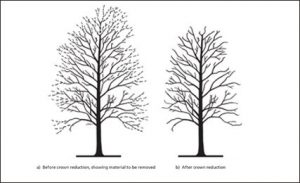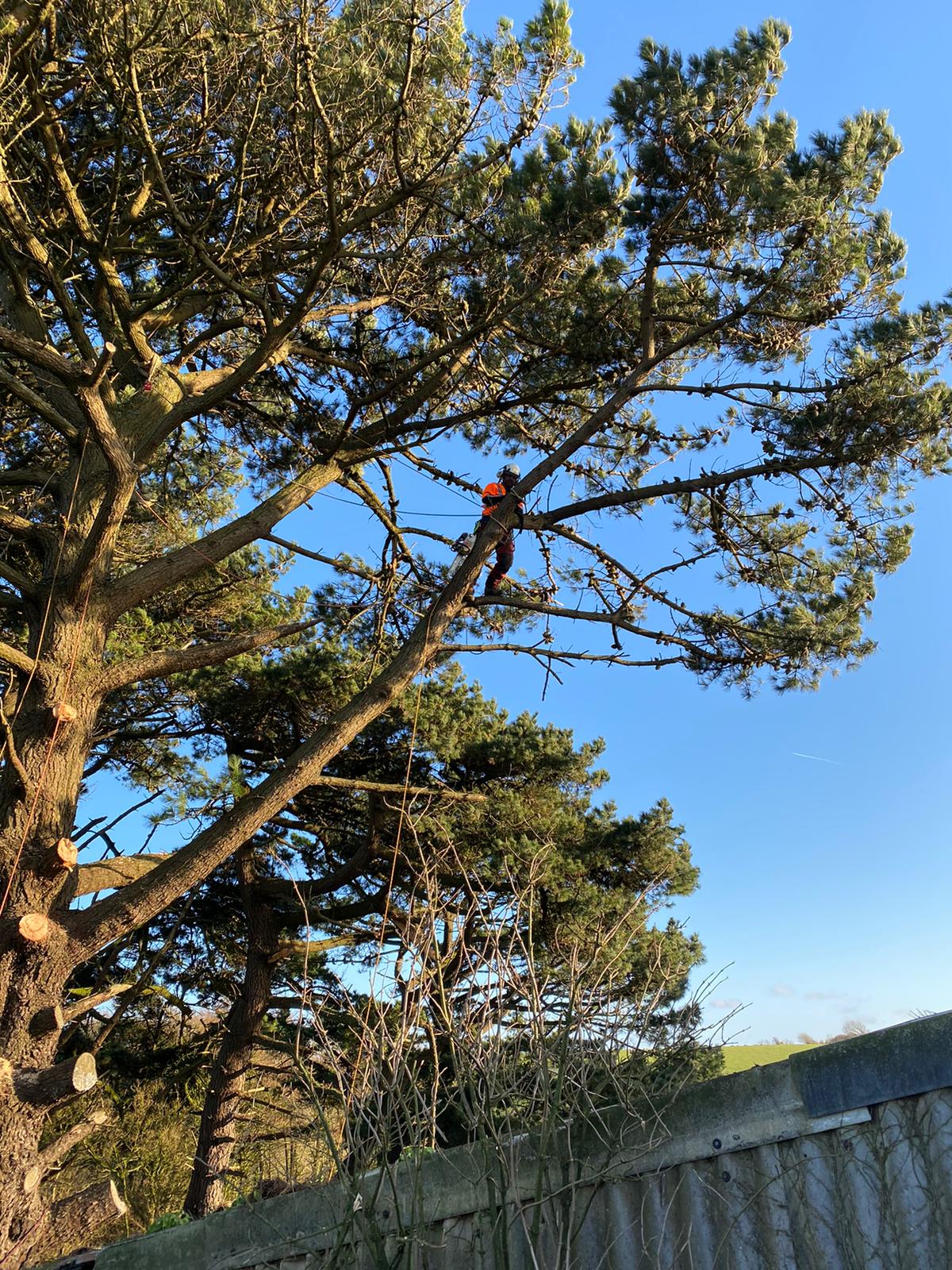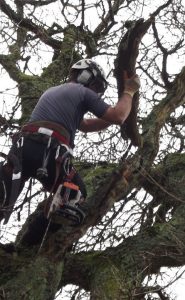 CROWN CLEANING
CROWN CLEANING
This a recommended management practice for mature and veteran trees near to buildings, paths and roads. Dead wood and crossing/damaged branches are pruned out, and any ivy or other climbing plant considered detrimental or undesirable is removed from the crown and stem.
By reducing, as far as reasonably practical, the risk of falling branches causing injury or damaging property, the tree’s owner can properly discharge his/her duty of care. In addition the pruning helps remove the risk of fungal or bacterial infection that can enter through bark damage from rubbing branches. It also helps the mature tree conserve energy by doing some of its ‘natural pruning’ for it.
CROWN THINNING
In crown thinning, an even density of foliage should be retained throughout a well-spaced and balanced branch structure which could, if required, provide an adequate framework for a possible future crown reduction. If the objective is to lessen the overall loading on a defective branch or stem, crown reduction and reshaping should be chosen in preference to crown thinning.
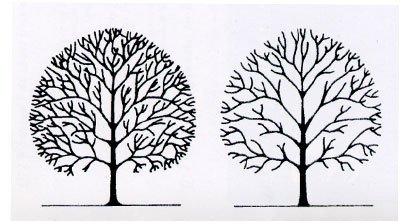 Crown thinning is the process of removing secondary branches in order to allow more light through the crown without reducing its size. You might want to consider crown thinning in preference to crown reduction as it can provide better light penetration in to your garden with less impact on the tree’s vitality, and usually at a lower cost.
Crown thinning is the process of removing secondary branches in order to allow more light through the crown without reducing its size. You might want to consider crown thinning in preference to crown reduction as it can provide better light penetration in to your garden with less impact on the tree’s vitality, and usually at a lower cost.
POLLARDING
If pollarding is to be carried out, it should preferably start soon after the tree has become established and is between 25mm to 50mm in diameter at the selected height of pollarding (often 2m to 3m). The initial pollarding cut should be made at a height which reflects site usage but which, if possible, allows some of the pre-existing foliage to be retained, in order to maintain physiological function and thus reduce the probability of dieback or death.
Pollarding is an ancient management practice that creates a very characteristic appearance and is fairly straightforward to maintain. Pollarding is not suitable for mature trees except as an absolute last resort, or in special circumstances, ie. unless that tree used to be managed by pollarding but was left to lapse, and can be brought back under a pollarding regime in stages.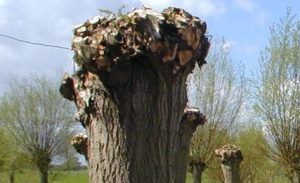
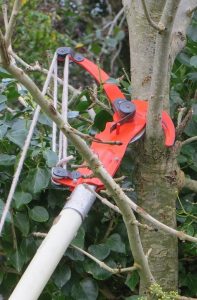 FORMATIVE PRUNING
FORMATIVE PRUNING
The main aim of formative pruning is to produce a tree which in maturity will be free from any major physical weaknesses and which will complement the management objectives for the site.
This is carried out on young but established trees, within a few years of planting, to remove weak or crossing branches and co-dominant (twin) stems.
CROWN LIFTING
Crown lifting involves pruning to achieve a desired vertical clearance above ground level or other surface. This is sometimes necessary to facilitate site usage. This is usually done to a specified height, i.e. 2.5m over public footpaths or 5m over public roads. Major branches will usually not be touched if possible as this can severely affect the tree’s future health but this may be necessary if earlier preventative management was not carried out.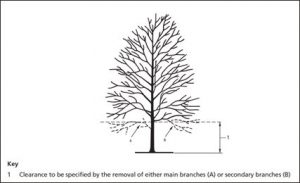
CROWN REDUCTION
Crown reduction alleviates biomechanical stress by reducing both the leverage and the sail area of the tree, and can allow retention of a tree in a confined space. It can also be used to create a desired appearance or to make the tree more suited to its surroundings. Unlike topping, it retains the main framework of the crown and therefore a high proportion of the foliage-bearing structure, which is important for the maintenance of vitality. Not all species or individual trees are appropriate candidates for reduction.
Crown reduction is what most people think of when they imagine tree work. It involves reducing the size of the crown by cutting back branches all round the tree by a specified percentage of their original length, whilst retaining the crown’s characteristic shape. Crown reduction is not the ideal solution to excessive shading as the crown will tend to regrow very densely. Crown thinning has a lower overall impact on the tree’s vitality.